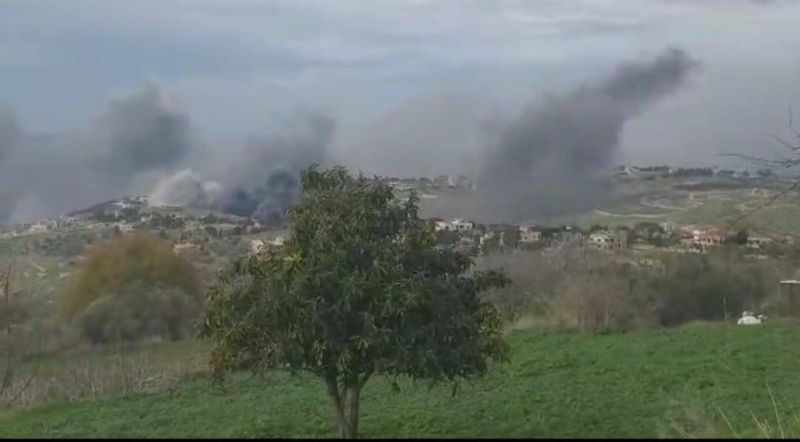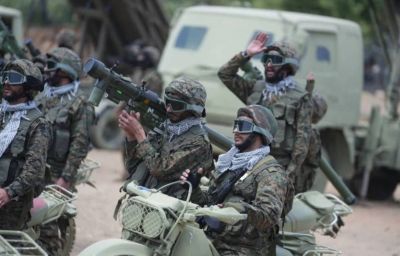
Israeli airstrikes target Wadi Sluqi on Tuesday (Credit: Muntasser Abdallah)
Wadi Hujjeir and Wadi Sluqi, two valleys in southern Lebanon, have been the focus of constant artillery shelling and airstrikes since cross-border fighting between Israel and Hezbollah began on Oct. 8.
On Tuesday and Wednesday mornings alone, at least 25 Israeli airstrikes were reported to have targeted Wadi Sluqi and the outskirts of Houla, Marjayoun district.
The valleys' strategic importance
Wadi Sluqi, located between the three towns of Houla, Majdal Selm (Marjayoun district), and Shakra (Bint Jbeil district), is an extension of Wadi Hujjeir, which is much bigger and links the Litani river to the Lebanese-Israeli borders. Wadi Hujjeir also links the villages of Aitaroun and Ghandourieh, both in Bint Jbeil district.
Generally speaking, valleys have military and strategic importance due to their rugged terrain which fighters use to store weapons and launch surprise attacks.
Wadi Sluqi has been one of these corridors for a long time, particularly since its landscape is suitable for hiding and carrying out ambushes. The valley's importance is also due to the fact that it connects the villages and towns of the central, eastern and western sectors of southern Lebanon.
According to political analyst and retired Brigadier General Amin Hoteit, Wadi Hujjeir has "strategic and military advantages" since it can be used by fighters for a variety of different reasons.
"These valleys can be used as corridors, hideouts, rest and waiting centers, or as fighting centers ... therefore, Wadi al-Hujjeir and Wadi Sluqi are considered some of the most important strategic areas in the entire southern region," Hoteit told L'Orient Today.
The valleys that "marked the end of the 2006 war"
This isn't the first conflict during which these valleys have been the focus of military operations and attacks.
In the 2006 war between Hezbollah and Israel, an Israeli battalion was destroyed in this region, marking the end of the war, according to Hoteit. Moreover, Wadi al-Hujjeir is called the Merkava Cemetery, as the Israeli army lost approximately 50 Merkava tanks there in its war on Lebanon in 2006.
Wadi Sluqi also bears the name of "Valley of Death" or "Valley of the Martyrs," as it is a historical crossing point for fighters as they move toward the Lebanese-Israeli border.
Even the crusaders, more than 700 years ago, used this valley in their invasion of the region. Historians say the crusaders built a castle in the western part of Wadi Sluqi — the Dubieh fortress located on the outskirts of the town of Shakra — to secure their path to Jerusalem.
